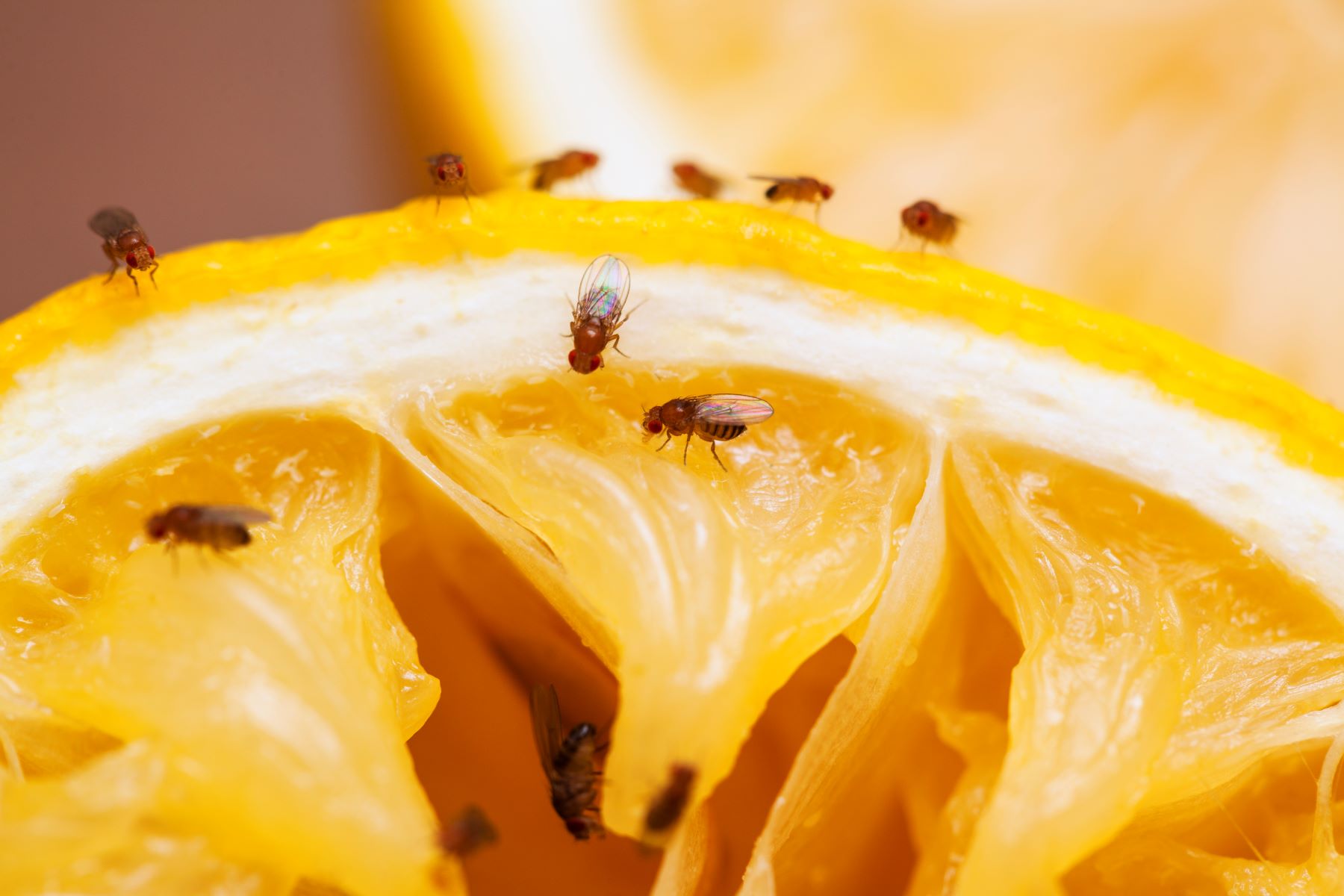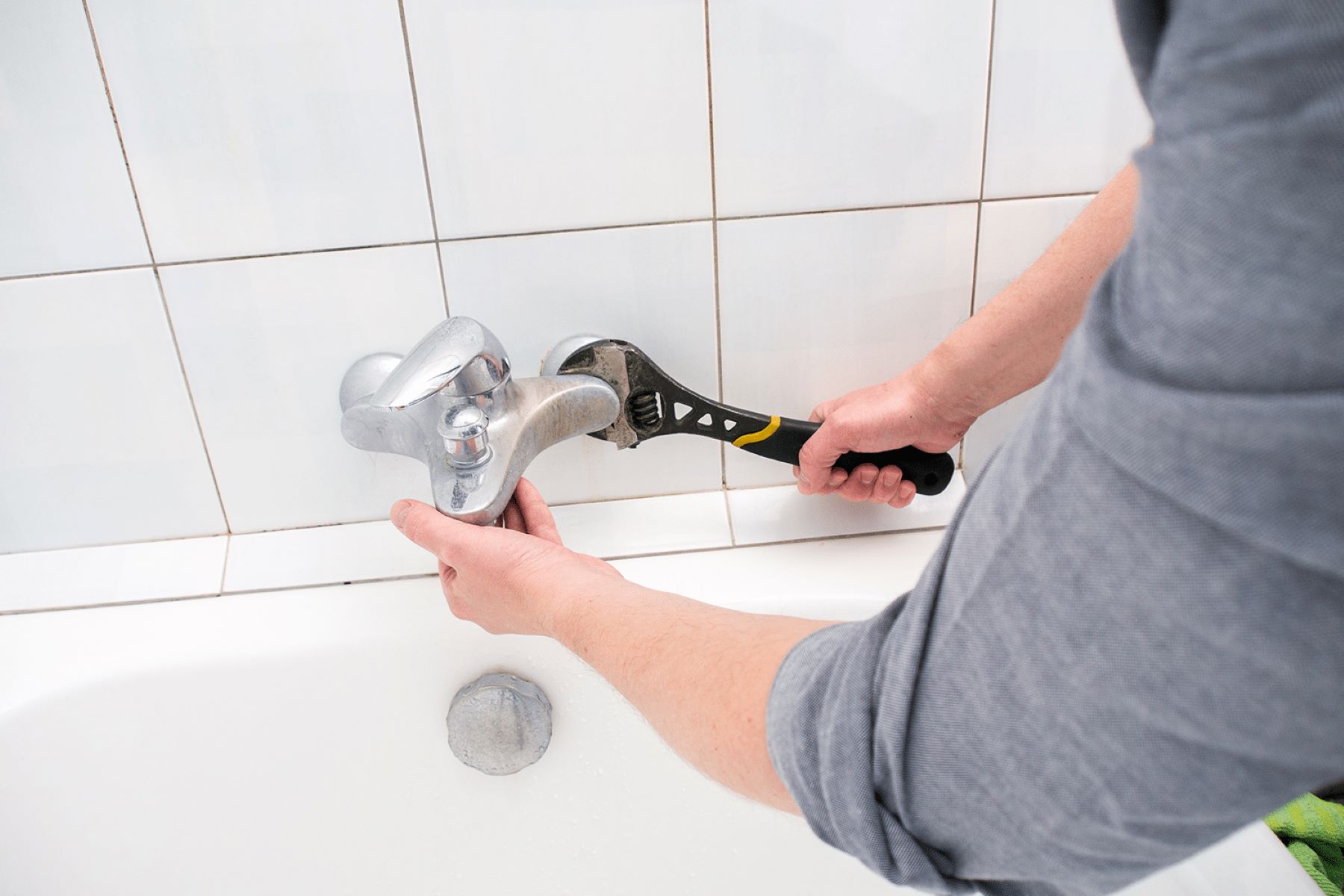Home>Home and Garden>10 Signs Of A Fruit Fly Or Gnat Infestation In Your Home And Genius Hacks To Banish Them


Home and Garden
10 Signs Of A Fruit Fly Or Gnat Infestation In Your Home And Genius Hacks To Banish Them
Published: January 21, 2024
Discover 10 signs of a fruit fly or gnat infestation in your home and effective hacks to eliminate them. Keep your home and garden pest-free with these genius tips!
(Many of the links in this article redirect to a specific reviewed product. Your purchase of these products through affiliate links helps to generate commission for Regretless.com, at no extra cost. Learn more)
Table of Contents
Signs of a Fruit Fly or Gnat Infestation in Your Home
Fruit flies and gnats are pesky little insects that can quickly turn your home into an unwelcome habitat. Identifying the signs of an infestation early on is crucial to prevent these tiny intruders from taking over. Here are the telltale indicators that you may have a fruit fly or gnat infestation in your home:
-
Sudden Appearance: If you notice a sudden surge in the number of small flying insects in your kitchen, near your fruit bowl, or around your houseplants, it's likely that you have a fruit fly or gnat infestation.
-
Fruit and Vegetable Activity: Fruit flies are attracted to overripe or fermenting fruits and vegetables, so if you spot them hovering around your produce, it's a strong indication of an infestation. Similarly, gnats are drawn to moist soil, so they may be found near indoor plants or potted herbs.
-
Egg-Laying Sites: Fruit flies and gnats lay their eggs near food sources, such as in drains, garbage disposals, and on the surface of fruits and vegetables. If you notice small clusters of eggs in these areas, it's a clear sign of an infestation.
-
Presence of Larvae: Both fruit fly and gnat larvae are tiny, white, and worm-like. If you spot these larvae in your kitchen or near your plants, it's a strong indication that you have an infestation.
-
Unpleasant Odor: Fruit flies and gnats are often associated with a musty or fermenting odor. If you detect an unusual smell in your kitchen or near your garbage disposal, it could be a sign of an infestation.
-
Erratic Flying Patterns: Fruit flies and gnats exhibit erratic flying behavior, often hovering in small groups near their food sources. If you observe these insects darting around in a seemingly disorganized manner, it's likely that you have an infestation.
-
Tiny Black Dots: Fruit fly excrement appears as tiny black dots, which may be visible near infested areas. If you notice these dots on surfaces around your kitchen or near your plants, it's a clear sign of a fruit fly infestation.
-
Increased Pest Activity: If you have other pests in your home, such as ants or spiders, they may be attracted to the same food sources as fruit flies and gnats. An increase in overall pest activity could indicate an infestation.
-
Persistent Presence: Fruit flies and gnats are persistent and can be challenging to eliminate once they establish a presence in your home. If you consistently spot these insects despite cleaning and removal efforts, it's likely that you have an infestation.
-
Visual Confirmation: Lastly, if you visually spot fruit flies or gnats in large numbers, especially in areas where food is present, it's a clear indication of an infestation.
Being vigilant and proactive in addressing these signs can help you tackle a fruit fly or gnat infestation before it becomes a pervasive problem in your home.
Identifying the Problem
Identifying a fruit fly or gnat infestation in your home is crucial to effectively address the issue and prevent it from escalating. These tiny pests can multiply rapidly, making it essential to recognize the signs early on. By being attentive to the following indicators, you can promptly take action to eradicate the infestation and restore a pest-free environment in your home.
The sudden appearance of numerous small flying insects, particularly in areas associated with food, such as the kitchen, near fruit bowls, or around indoor plants, is a clear sign of a fruit fly or gnat infestation. Fruit flies are attracted to overripe or fermenting fruits and vegetables, while gnats are drawn to moist soil, leading them to congregate around indoor plants or potted herbs.
Observing egg-laying sites is another key aspect of identifying the problem. Fruit flies and gnats lay their eggs near food sources, including drains, garbage disposals, and the surfaces of fruits and vegetables. Spotting small clusters of eggs in these areas indicates an active infestation and the need for immediate intervention.
Furthermore, the presence of larvae is a strong indicator of a fruit fly or gnat infestation. Both fruit fly and gnat larvae are tiny, white, and worm-like, and if you notice them in your kitchen or near your plants, it's a clear indication that an infestation is underway.
An unpleasant odor, often described as musty or fermenting, can also signal the presence of fruit flies or gnats. If you detect an unusual smell in your kitchen or near your garbage disposal, it could indicate an infestation that requires attention.
Additionally, erratic flying patterns exhibited by fruit flies and gnats, along with the appearance of tiny black dots—indicative of fruit fly excrement—further confirm the presence of these pests in your home. Moreover, an increase in overall pest activity, including the presence of other pests like ants or spiders, could be linked to a fruit fly or gnat infestation, emphasizing the need for thorough inspection and intervention.
Consistent vigilance and prompt action are essential in addressing these signs to effectively combat a fruit fly or gnat infestation before it becomes a pervasive problem in your home. By recognizing these indicators, you can take proactive measures to eliminate the infestation and prevent future occurrences, ensuring a clean and pest-free living environment for you and your family.
Tips for Banishing Fruit Flies and Gnats
Once you've identified a fruit fly or gnat infestation in your home, it's crucial to take swift and effective measures to banish these pesky insects. Here are some practical tips to help you eliminate fruit flies and gnats from your living space:
-
Sanitize Your Kitchen: Thoroughly clean and sanitize your kitchen, paying special attention to areas where fruit flies and gnats are commonly found, such as around the sink, garbage disposal, and fruit storage areas. Wipe down surfaces, clean drains, and ensure that no food residue is left behind.
-
Remove Overripe Fruits and Vegetables: Discard overripe or rotting fruits and vegetables that serve as breeding grounds for fruit flies. Store fresh produce in the refrigerator or in sealed containers to prevent further infestation.
-
Seal Trash Bins: Keep trash bins tightly sealed to prevent fruit flies and gnats from accessing food scraps and organic waste. Regularly empty and clean the bins to eliminate potential breeding sites.
-
Use Vinegar Traps: Create simple yet effective vinegar traps by placing small dishes filled with apple cider vinegar and a few drops of dish soap around infested areas. The sweet scent of vinegar attracts fruit flies, while the dish soap breaks the surface tension, causing the flies to drown.
-
Cover Drains and Sinks: Use drain covers to prevent fruit flies and gnats from entering and breeding in moist areas. Regularly clean and disinfect drains to remove any organic matter that may attract these insects.
-
Implement Natural Repellents: Consider using natural repellents such as essential oils or herbs with strong scents, like basil, mint, or lavender, to deter fruit flies and gnats from congregating in specific areas of your home.
-
Maintain Indoor Plants: If gnats are prevalent around indoor plants, allow the soil to dry out between watering sessions to discourage gnat larvae from thriving in moist conditions. You can also use a thin layer of sand or gravel on the soil surface to deter adult gnats from laying eggs.
-
Keep Surfaces Dry: Wipe down wet or moist surfaces, including kitchen counters and sinks, to eliminate potential breeding sites for fruit flies and gnats. By maintaining dry conditions, you can disrupt the insects' reproductive cycle.
-
Repair Screens and Seal Entry Points: Inspect window screens and seal any gaps or cracks around doors and windows to prevent fruit flies and gnats from entering your home. This proactive measure helps to limit their access and reduce the likelihood of infestations.
-
Consult Professional Pest Control Services: If the infestation persists despite your efforts, consider seeking assistance from professional pest control services. They can provide targeted treatments to eradicate fruit flies and gnats from your home effectively.
By implementing these tips, you can effectively banish fruit flies and gnats from your living space, creating a clean and pest-free environment for you and your family.
Genius Hacks to Banish Fruit Flies and Gnats
When dealing with a fruit fly or gnat infestation, employing ingenious strategies can significantly aid in eradicating these pesky insects from your home. Here are some genius hacks and unconventional methods to effectively banish fruit flies and gnats:
1. DIY Fruit Fly Traps
Create your own fruit fly traps using common household items. One popular method involves using a small jar or bowl filled with apple cider vinegar and a few drops of dish soap. The sweet scent of the vinegar attracts the fruit flies, while the dish soap disrupts the surface tension, causing the flies to sink and drown.
2. Red Wine Trap
Fruit flies are also attracted to the aroma of red wine. Place a small amount of red wine in a shallow dish and cover it with plastic wrap. Poke a few small holes in the plastic wrap to allow the fruit flies to enter. Once inside, they will be unable to escape and will eventually drown in the wine.
3. Banana Trap
Utilize the irresistible allure of ripe bananas to trap fruit flies. Place a piece of overripe banana in a jar and cover the opening with plastic wrap secured by a rubber band. Poke small holes in the plastic wrap to entice the fruit flies inside, where they will become trapped.
4. Homemade Gnat Repellent
Craft a natural gnat repellent using essential oils. Mix a few drops of essential oil, such as lavender, eucalyptus, or peppermint, with water in a spray bottle. Spritz the solution around areas where gnats are prevalent to deter them from congregating.
5. Vacuuming Adult Insects
Using a vacuum cleaner with a hose attachment, carefully and swiftly vacuum up adult fruit flies and gnats. This method helps to reduce the immediate population of flying insects in your home.
6. Sticky Traps
Deploy sticky traps, readily available at hardware stores, to capture fruit flies and gnats. Place these traps near infested areas, such as near fruit bowls or indoor plants, to effectively capture the flying insects.
7. Biological Control with Predatory Insects
Introduce predatory insects, such as predatory mites or nematodes, into the soil of potted plants to combat gnat larvae. These natural predators can help control the gnat population by targeting their larvae.
8. UV Light Traps
Consider using UV light traps designed specifically for capturing flying insects. These traps attract and capture fruit flies and gnats using ultraviolet light, helping to reduce their numbers in your home.
9. Dish Soap Barrier
Create a barrier using a mixture of water and dish soap in a shallow dish. The dish soap reduces the surface tension of the water, causing fruit flies and gnats to become trapped and unable to escape.
10. Maintain Cleanliness
Consistently maintain cleanliness in your home by promptly cleaning up spills, disposing of overripe fruits and vegetables, and regularly emptying and cleaning trash bins. By eliminating potential food sources and breeding sites, you can prevent future infestations.
By incorporating these genius hacks and unconventional methods into your pest control efforts, you can effectively banish fruit flies and gnats from your home, ensuring a pest-free and hygienic living environment for you and your family.
Preventing Future Infestations
Safeguarding your home against future fruit fly and gnat infestations is essential to maintain a clean and pest-free environment. By implementing proactive measures and adopting preventive strategies, you can significantly reduce the risk of recurring infestations. Here are effective methods to prevent future occurrences of fruit fly and gnat invasions:
1. Proper Food Storage
Store fruits and vegetables in sealed containers or in the refrigerator to deter fruit flies from accessing breeding grounds. Regularly inspect and discard overripe or rotting produce to eliminate potential attractants for these pests.
2. Regular Cleaning and Maintenance
Maintain cleanliness in your kitchen and other susceptible areas by promptly wiping spills, cleaning food debris, and sanitizing surfaces. Regularly clean drains, garbage disposals, and trash bins to prevent the buildup of organic matter that can attract fruit flies and gnats.
3. Seal Entry Points
Inspect windows, doors, and screens for any gaps or cracks that could serve as entry points for fruit flies and gnats. Seal these openings to restrict the insects' access to your home, reducing the likelihood of infestations.
4. Proper Waste Management
Dispose of organic waste promptly and ensure that trash bins are tightly sealed. Regularly empty and clean the bins to prevent the accumulation of decaying matter that can attract fruit flies and gnats.
5. Monitor Indoor Plants
Keep a close eye on the moisture levels of the soil in your indoor plants to discourage gnat infestations. Allow the soil to dry out between watering sessions and consider using a layer of sand or gravel on the soil surface to deter adult gnats from laying eggs.
6. Natural Repellents
Utilize natural repellents such as essential oils or herbs with strong scents to deter fruit flies and gnats from congregating in specific areas of your home. These natural deterrents can help prevent future infestations.
7. Professional Pest Control Inspection
Schedule periodic inspections by professional pest control services to assess and address any potential vulnerabilities in your home. Their expertise can help identify and mitigate conditions that may lead to fruit fly and gnat infestations.
By incorporating these preventive measures into your home maintenance routine, you can create an environment that is less conducive to fruit fly and gnat infestations. Consistent vigilance and proactive pest control efforts are key to safeguarding your home against future pest invasions, ensuring a clean and hygienic living space for you and your family.










